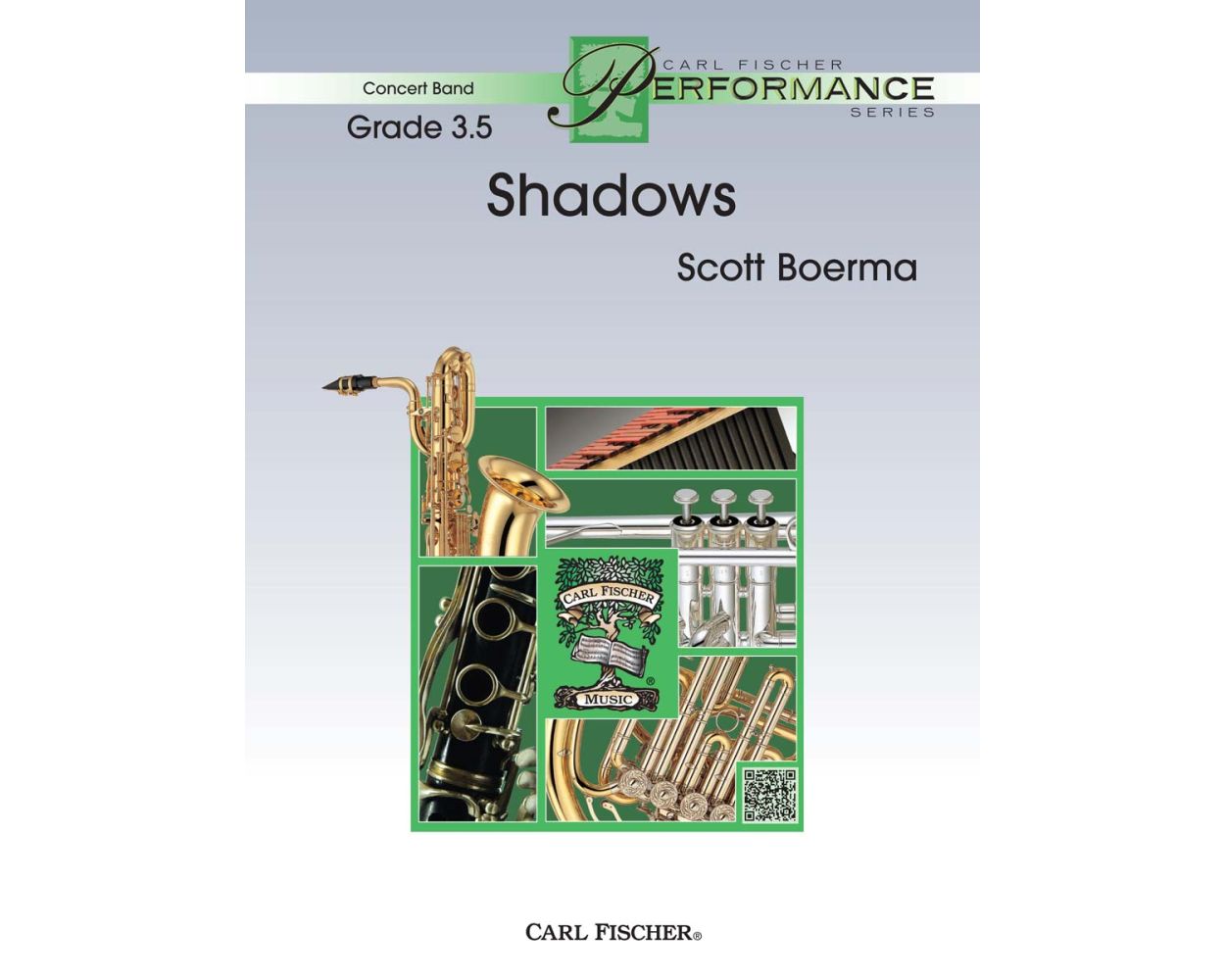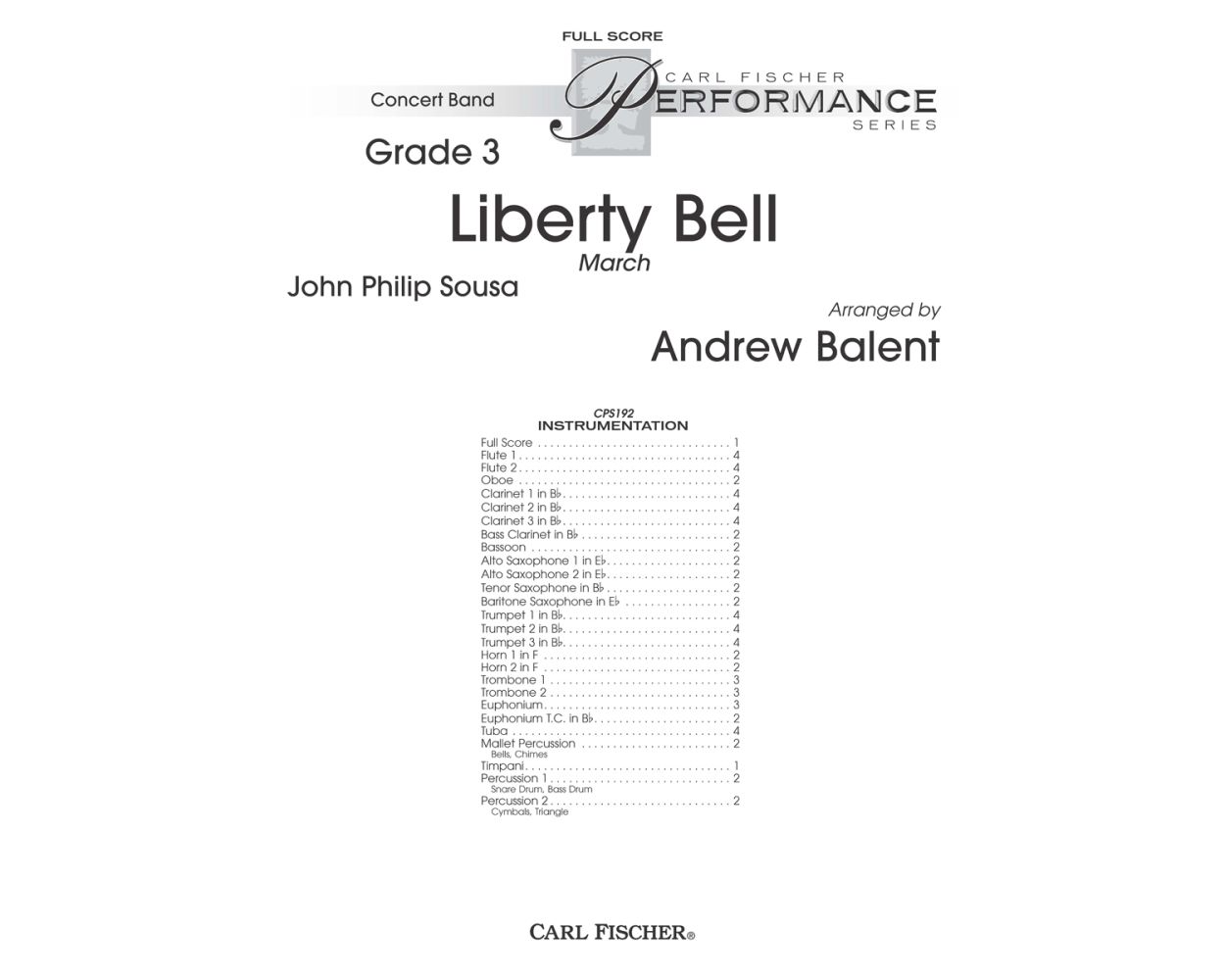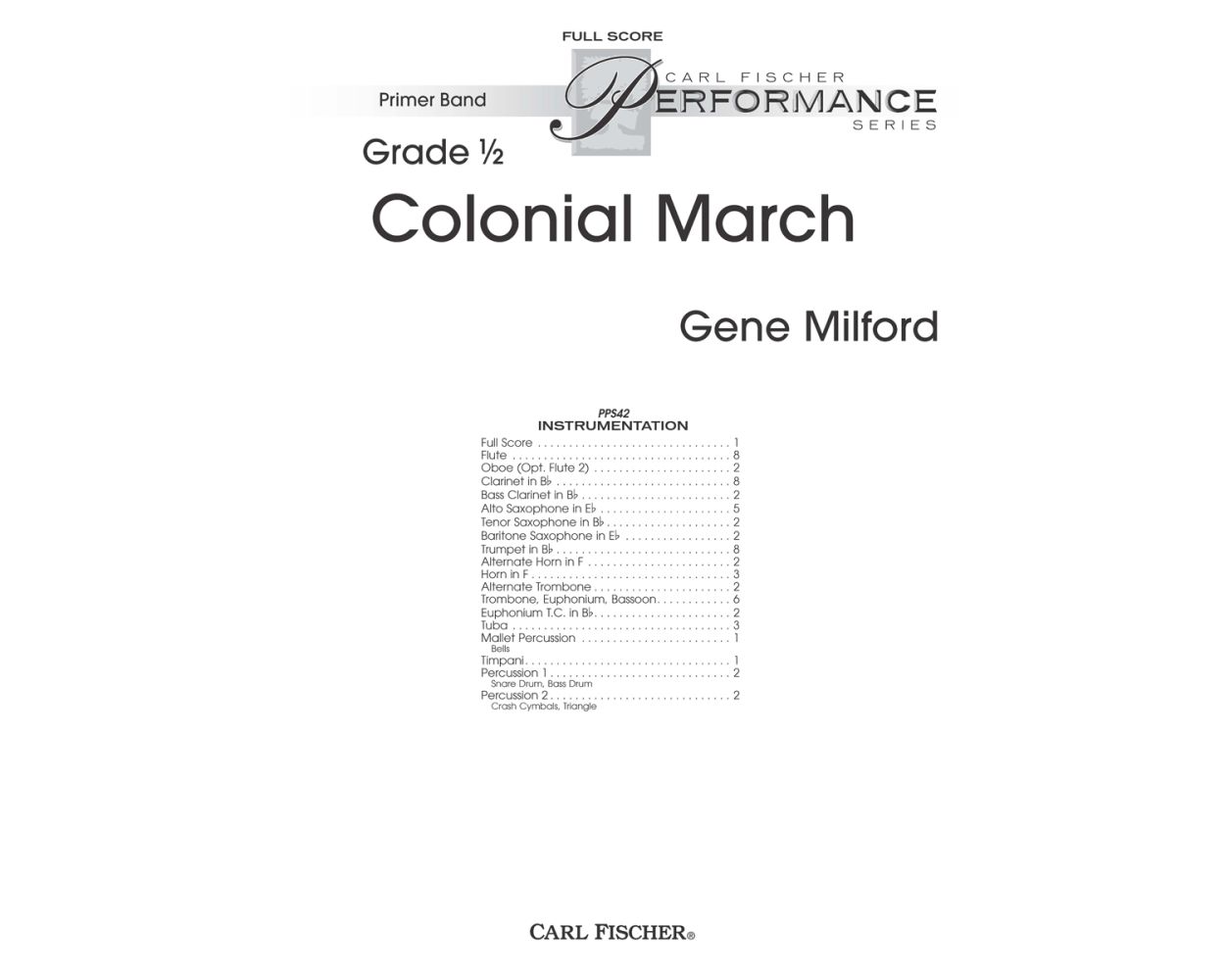Results
-
 £75.00
£75.00Irish Tune from County Derry and Shepherd's Hey - Percy Grainger
Performable either together or separately, the first selection, commonly known as Danny Boy) is a masterful example of the pure beauty of sound and melody, while Shepherd's Hey is a sprightly dance.
Estimated dispatch 12-14 working days
-
 £71.00
£71.00Daedelus' Labyrinth
The music for Daedalus' Labyrinth is loosely based on the story first presented by Homer. You'll hear the musical twists, rhythmic turns, and harmonic changes that have made Sean O'Loughlin's music so popular. This is a sophisticated work, but well worth the effort for the advancing band. Conquer the Labryrinth!
Estimated dispatch 12-14 working days
-
 £71.00
£71.00Legacy of Honor
This piece drives from the start with bold trumpet flourishes and interjections from the rest of the band. After the exciting first section, a lyrical second theme departs to something beautiful and lush in harmonic structure. The development section is based on the opening theme, eventually leading the piece back, followed by a dynamic brass flourish in the coda. A solid choice by a known composer for contests and festivals.
Estimated dispatch 12-14 working days
-
 £71.00
£71.00Shadows
Written in memory of a prominent band director who touched the lives of so many, Shadows is an extremely emotional and passionate piece by composer Scott Boerma. It demonstrates Scott's heartfelt thoughts of admiration and sincerity through this gorgeous piece of music. We are proud to offer such a contemplative work and to have him in the Carl Fischer Music catalog for the first time. We hope to offer more of Scott's beautiful music in the near future.
Estimated dispatch 12-14 working days
-
 £53.00
£53.00Cold Mountain Saga
Cold Mountain in North Carolina was recently made famous by the best selling novel and major motion picture of the same name. This piece for young band is not intended to depict the story of the book or movie, but rather to depict the rich history and natural beauty of the area itself. The hauntly beautiful melody first stated by a recorder is one of the most memorable Larry has every written.
Estimated dispatch 12-14 working days
-
 £42.00
£42.00Land of Pharaohs
The mystery and romance surrounding Egypt's Nile river, expansive deserts, mighty pyramids, Valley of the Kings, and legacy of art and culture has inspired generations of men and women around the globe. In ancient Egypt, the word "Pharaoh" meant "Great House," referring first to the royal palace itself and later to the ruler in power as an official title of leadership. Land of the Pharaohs is a short, musical depiction of the power that the ancient Pharaohs once held and the drama that has captivated mankind since the end of their long reign.
Estimated dispatch 12-14 working days
-
 £42.00
£42.00Renaissance Dance - Tielman Susato
The music of Susato has long been a staple in band music, as it is some of the first examples of music for consorts of instruments. Band directors have long embraced his music to teach the Renaissance style. With Renaissance Dance, Bill Calhoun has delivered the easiest possible arrangement of this famous Susato piece taking care to retain the original style and teachability.
Estimated dispatch 12-14 working days
-
 £71.00
£71.00Liberty Bell
One of Sousa's most famous marches, The Liberty Bell was first published in 1893. It is a tribute to the famous liberty bell from the American revolution. Andrew Balent has provided a playable setting of this famous march that retains the integrity of the original.
Estimated dispatch 12-14 working days
-
 £38.00
£38.00Samba Time!
Samba Time delivers something wonderful for the youngest of students. Composer James Meredith has found a way to use very limited technical demands to teach the style of a Samba. If students are engaged as beginners and enjoy what they do, they will be inspired to continue on their instruments. This piece will do just that and will be fun for them and their parents at their very first concert
Estimated dispatch 12-14 working days
-
 £38.00
£38.00Colonial March
Colonial March is a stately British style march for beginning bands. George Washington served in the British colonial army prior to the American Revolution when he became the colonies' Commander-in-Chief and later the first President of the new nation. Two melodies, Yankee Doodle and America (My Country 'Tis of Thee or God Save the King) were known to both the British and American armies and are incorporated in this precious march for the youngest of students.
Estimated dispatch 12-14 working days
